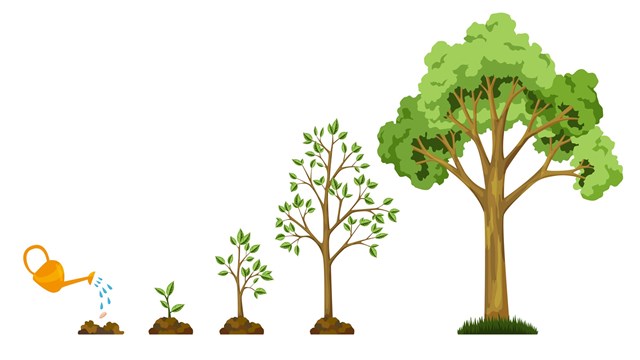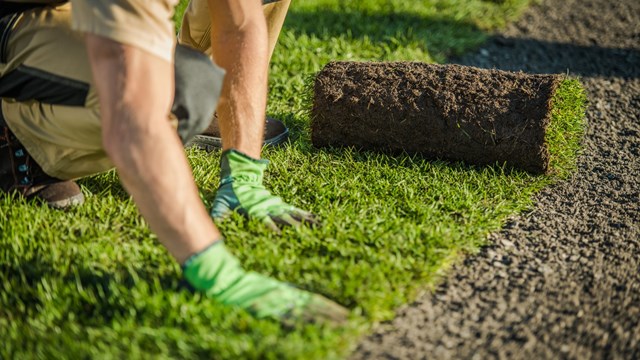
First impressions are vital in the search for a home. The landscape of a condo or housing association says as much about a community as its architecture. While the mere arrangement of shrubs may not seem like something that should be high on the priority list of any HOA or management company, the various elements of a landscape's design do have a great effect on a community. From safety and functionality to morale and resale value, the layout, materials, and upkeep of a community's landscape affect residents in many ways.
The Impact of Good Design
Community: "Site planning can foster community in common spaces," says Charles Brenton, RLA, of Brenton Associates, a landscaping firm in Philadelphia that does work throughout the region. "I once visited a condo in Maryland that had converted its boating dock to a crabbing dock. Benches and paths can help make a place where people can congregate."
Allowing residents to have a say in the use and arrangement of their community spaces goes a long way toward encouraging neighborly interaction. "At one particular property, one community garden produced a lot of vegetables, and they ended up giving them away to other residents," says Jaime Raskulinecz, co-owner of Rainbow Property Management LLC in Verona.
Safety: "In terms of safety, in a public situation, you always want to be careful of creating places where people can hide," says Jeffrey A. Tandul, the immediate past president of the New Jersey chapter of the American Society of Landscape Architects (NJASLA). "You don't want to have large shrubs near sidewalks, where people can hide and basically jump out on someone."
Raskulinecz agrees. "You want to make sure there are no tall bushes where people may need a few minutes to get a key in the lock, to access the building."
"There is a practiceof crime prevention through environmental design," Tandul continues. "If a place is not maintained well, if something is broken or vandalized, it is better to remove it right away from the site because it will encourage further vandalism if it is left there."
Brenton recently was called to testify in a proceeding concerning an accident in a parking lot. The discrepancy was over the height of certain bushes that blocked sight lines and caused an injury. One party claimed that they should have been clipped back further but the issue could have been avoided completely with a good design choice: bushes that would not grow larger than were needed.
Functionality: Sustainability is a major part of today's landscaping business and design elements. Good design choices can greatly affect the environment and the use of energy, says Tandul.
"If you plant the right material you can allow more water from the rooftops to recharge into the soil and water systems," he says. "Green roofs and ground plantings can reduce energy consumption. Evergreens can be planted to block northwest winds and planting deciduous material can create shade to ease cooling costs."
"Erosion problems are fairly common," adds Brenton, "and they have to be corrected. Last year we were called out to a project west of Philly where some of the homeowners had hired someone to implement a trail system on the property. When we went out and looked, we found that the trails were poorly built. The design was minimal and the construction was very poor. They couldn't maintain the trails because they were not properly graded. The result was disappointment."
Morale: Harmonious landscape design also has a positive effect on how people feel about where they live. Landscapes that have been revamped and updated have an emotional effect on residents, says Raskulinecz. "Once you bring a designer in to redo the landscaping it really affects that mood of the residents. You don't want it to look cookie-cutter, with the identical hedges like they used to put in everywhere."
Resale: "A unit is probably going to sell faster in a pleasant environment," says Raskulinecz. "A designer is going to be able to help you maximize the outdoor space and what it looks like, and hopefully help you minimize expense to get it to look that way."
"It's obvious that good landscaping can affect the value of any property- condo, co-op or otherwise," adds Brenton. "The front-end initial impression is extremely important. Just ask any realtor."
"In the past people have not paid as much attention to the outdoor space, but in a condo or co-op where space is limited, having an outdoor space really adds to the value of a property," adds Tandul. "Increases can range from 10 to 40 percent of the property value for a professionally designed landscape."
Principles of Good Design
The principles of good landscape design are much like those of any art form and follow some basic tenets. Adherence to these guidelines can help a garden, community space, recreational area or other outdoor space achieve a sense of appropriateness and harmony. Steve Boulden, of www.the-landscape-design-site.com, cites these fundamental elements of good design:
Unity: One of the most important elements, unity can be achieved by employing its smaller cousins: consistency and repetition.
Consistency refers to the way in which various elements of the landscape fit together as a whole—in terms of height, texture, color scheme, size and so on. Repeating garden elements like plants, plant groups or décor can put your eyes at ease as they survey the space, allowing them to instinctively recognize the repeating elements.
A simple way to create unity in your landscape is by creating themes, according to Boulden. Garden décor can help identify a poets' walk at a college campus, or a bird lover's retreat at the corner of a condominium landscape, for example.
Simplicity: One of the most common mistakes made by do-it-yourselfers is the idea that more is better. Keeping landscape elements within a theme or using colors or materials go a long way toward achieving harmony.
"The trend now in suburban homes and townhouses is to plant one of everything," says Tandul, "and you have twenty different types of plants and the eye has nothing to focus on. It's always better to plant materials in masses and create spaces, and then if you have an unusual plant you can use it as an accent."
Balance: Achieving a sense of equality can take two different paths. Symmetrical balance seeks to create mirror images on either side of a garden or outdoor space. Both halves of the landscape share shapes, forms, heights and colors. Asymmetrical balance employs a more random free-form approach but uses some of the same elements within the landscape to give each side equal weight and attraction.
Boulden cites an example of a garden whose bed shapes or paths on either side of a garden are different while in harmony, the plantings and hard elements, such as boulders, are the same. Contrasting straight lines with curved lines, for example, can create interest while still preserving a sense of balance.
Color: In addition to the eye-catching qualities of bright, vivid flowers, color can be used to move the eye over a landscape in a purposeful way. Warm colors, such as oranges and reds, make objects feel closer to you, while cool colors, such as greens and blues, make objects appear to recede. Neutral colors, such as white, black, and grey, are more effective in the background with bright colors in the foreground, serving as the focal point for the eye.
Natural Transition: Gradual changes in a landscape help give it a natural feel. The transitions to and from similar heights, colors, shapes, textures of leaves, foliage shapes, forms and sizes make for good design. As in painting, optical illusions can be created using transition. Using shorter plants in relation to taller plants can frame a focal point, or vice-versa, make a landscape appear larger than it is.
Line: Flow is an important part of any landscape or garden. Entry, exit and passage through can make an outdoor space seem extremely inviting or slightly hostile. The way that plant beds, walkways, and entryways move and flow through a particular space has a direct relationship with the appeal of a design. Straight lines have a forceful and direct effect, while curvy lines tend to feel more natural, gentle, and flowing.
Proportion:The size of various elements of a landscape should be in appropriate relationship to each other. A 10-foot statue in the center of a small courtyard appears out of place and cramped while a three-foot waterfall in the center of a vast campus lawn seems trivial. Small features can be scaled to fit various rooms within a landscape and the elements can be manipulated to incorporate them within the whole.
Working with a Designer
Residents who want to revamp their landscapes have a couple of options when it comes to working with landscaping professionals. The first thing to consider is the size of the project. The second consideration is budget.
"Some projects are less complex and don't have much of a budget. If they just want to redo the shrubs, they may want to go with a design/build organization," advises Brenton. "If there are major issues to resolve or you want to overhaul the landscape, a landscape architect can make a real difference."
According to Tandul, a design/build organization typically uses a pre-packaged plan for the project, whereas a landscape architect does a site analysis, taking into account solar orientation, prevailing winds and opportunities and restrictions of the site.
Next comes a schematic design, says Brenton, "which is a very rough approach to where plants and paving would go, and from there, a landscape architect would get approval for the design development phase."
The approved ideas are then expanded and given specifics such as plant names, and then construction documents are prepared, according to Tandul. Plant and material schedules are specified for the contractor, and bids from contractors are taken. Once a bid is chosen and approved, the contracted bid is put into construction. After construction is underway, the landscape architect will follow up to ensure that the design is being correctly implemented. Upon completion, a post-follow-up evaluation may be necessary to determine a maintenance plan.
"It can be a long process, but I have found that it is worth it to use a designer," says Raskulinecz, "Each property is so different, that I feel like it is worth it to have a designer, partially because they can help you manage the process. It doesn't necessarily translate into a per dollar investment."
For information on taxes and landscaping, an accountant is the best bet. "In the past, in New Jersey, anything that you couldn't pick up and take with you could be considered a capital improvement," says Tandul, "but these designations are in flux as New Jersey tries to recoup tax dollars."
Denton Tarver is a freelance writer and a frequent contributor to The New Jersey Cooperator.






Leave a Comment